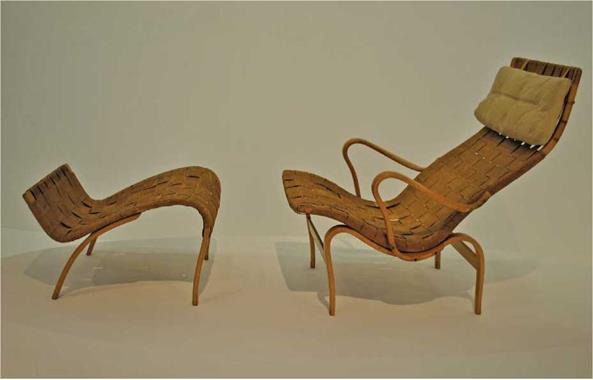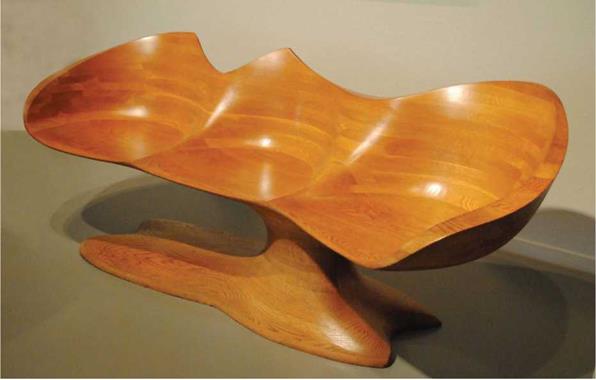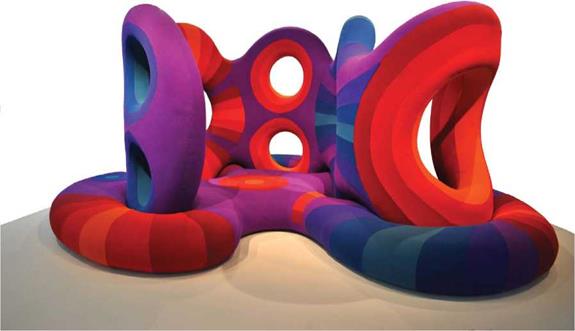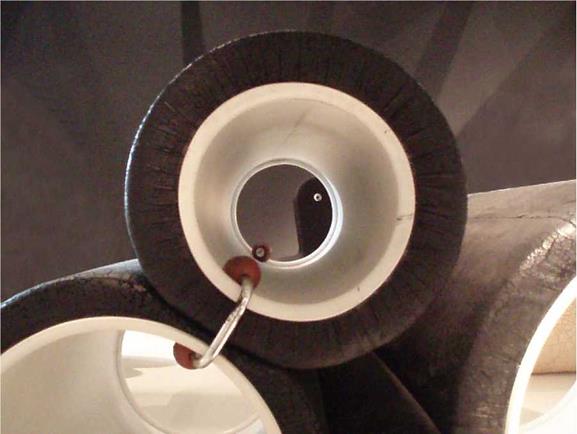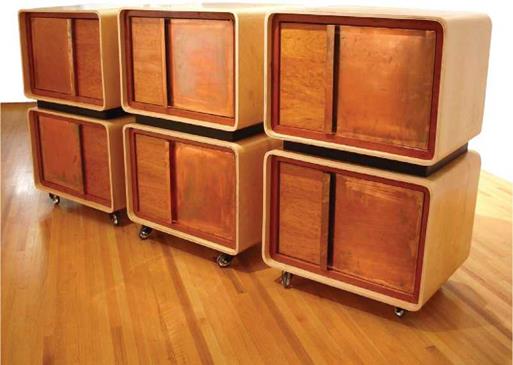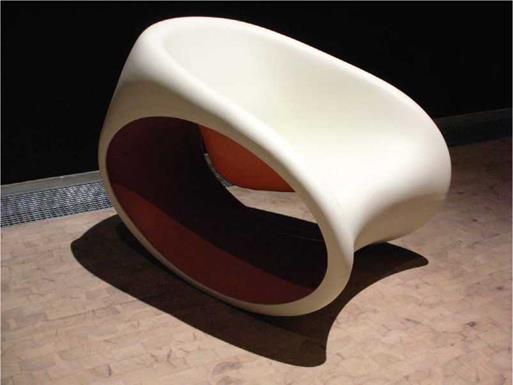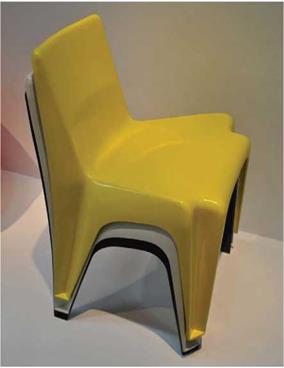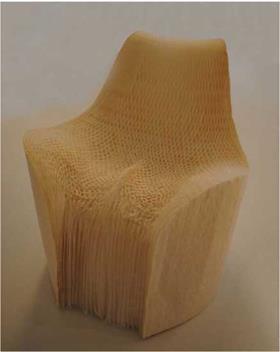Gallery exhibitions on furniture design at the local, regional, national, and international levels have become common occurrences, and they serve a significant purpose in educating and evolving contemporary paradigms about design. The International Arts and Crafts exhibit in London, Indianapolis, and San Francisco in 1996; the London exhibit focusing on Italian furniture design entitled "Icons" in 1992; Design by Delight, exhibited in Indianapolis in 1990; and the retrospective exhibit on the work of the late Poul Kjsrholm at the Louisiana Museum of Modern Art are examples of furniture exhibitions that have helped to promote the work of furniture fabricators and designers and in doing so, have also shaped the culture of furniture design. Museums such as the Cincinnati Art Museum exhibited Andrea Zittel’s A-Z collection (1997) and have several pieces designed and produced by Wendell Castle in their permanent collection, which is a representative story across the country. MOMA in New York City has an extensive permanent collection of well-designed, contemporary furniture—more than any museum or gallery in the world. The Kunst Industri Museet in Copenhagen is a remarkable resource for nineteenth – and twentieth-century furniture. A brief list of gallery, museum, and special exhibitions follows:

![]()
 Powerhouse Museum (Sydney)
Powerhouse Museum (Sydney)
Design Museum (London)
Victoria and Albert Museum (London)
Musee National des Techniques (Prague)
Danish Museum of Decorative Art (Copenhagen) Danish Design Center (Copenhagen)
Trapholt Furniture Museum (Kolding)
Musee Nationale des Techniques (Paris)
Musee des Arts Decoratifs (Paris)
Musee du Louvre (Paris)
Musee National d’Art Modern (Paris)
Musee d’Orsay (Paris)
Fondation National d’Art Contemporain (Paris)
Das Deutsche Museum (Munich)
Vitra Design Museum (Weil am Rhein)
Stedljk Museum (Amsterdam)
Booymans van Beumijen Museeum (Rotterdam) Salone del Mobile (Milan)
Form Design Center (Malmo)
Design Collection, Museum fOr Gestaltung (Zurich) Smithsonian Museum (Washington, DC)
Museum of Modern Art (MOMA) (New York)
National Academy of Design (New York) Cooper-Hewitt Museum (New York)
Metropolitan Museum of Art (New York)
International Contemporary Furniture Fair (New York) High Point Market (High Point, NC)
NEOCON (Chicago, IL)
Cincinnati Art Museum (Cincinnati, OH)
Vitra’s Chair Museum in Germany, located directly across the Swiss border from Basil, Switzerland, is home to Rolf Fehlbaum’s permanent collection of over 1,500 chairs located and exhibited in an outstanding furniture museum designed by architect Frank O. Gehry. The Chicago Art Institute, with its permanent and traveling exhibits, and San Diego’s Mingei International Museum in the heart of Balboa Park, exhibited "Heirlooms of the Future" presenting several furniture pieces designed and produced by George Nakashima, Bob Stocksdale, Wendy Maruyama, Brett Hesser, Ron Kent, Gene Blickenstaff, and Sam Maloof.
Collectively, museums and gallery exhibitions serve an important venue in educating and enlightening the public about furniture. Libraries such as the Furniture Library in High Point, North Carolina, and the Star Research Center in Grand Rapids are additional resources for historical and scholarly research within the field. International furniture fairs, including the Salone del Mobile in Milan, organized by COSMIT, and the International Contemporary Furniture Fair (ICFF), held annually in May at the Jacobs K. Javits Convention Center in New York City, help shape and evolve the discourse in furniture design.

|
|
|
Figure color-2 The shrank was a modified wardrobe that resembled the Dutch kast (akin to the armoire). It was typically fabricated in sections due to its large size and brought to the United States by immigrants who settled in the colonies. This piece was made in 1790, using tulipwood decorated with paint and wax inlay techniques as a relatively inexpensive way to embellish the shrank. Photography by Jim Postell, 2011.

|
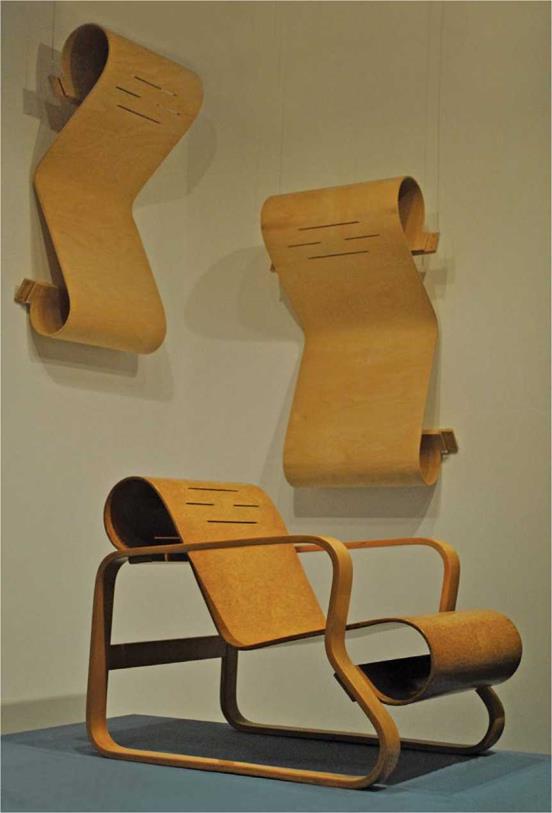
|
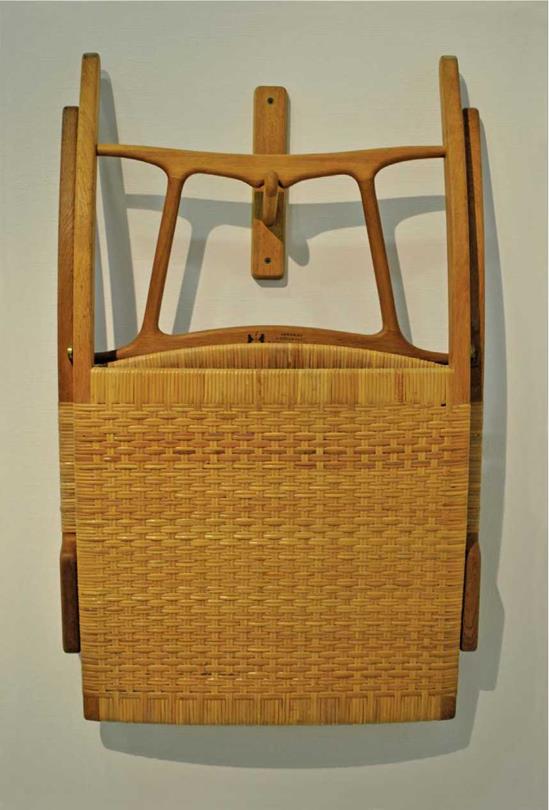
|
Figure color-6a Office chair, designed by Frank Lloyd Wright (1936-1939), made of steel, wood, and foam covered in fabric, and with casters (originally manufactured by Metal Office Furniture Co., now Steelcase, Inc.). 21% inches wide; 20 inches deep; 34 inches high; 21 inches seat height (54.5 wide;
51 cm deep; 86.5 cm high;
53 cm seat height). Photography by Gerald R. Larson, 2005.
Figure color-6b Office furniture designed by Frank Lloyd Wright, (1936-1939) for the S. C. Johnson Wax headquarters, Racine, Wisconsin. Made in Grand Rapids, Michigan, using steel and Formica. (84 inches wide; 35 inches deep; 33% inches high (213 cm wide;
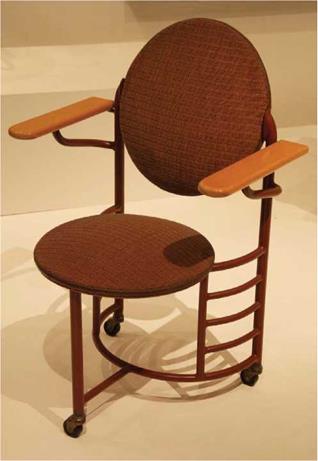
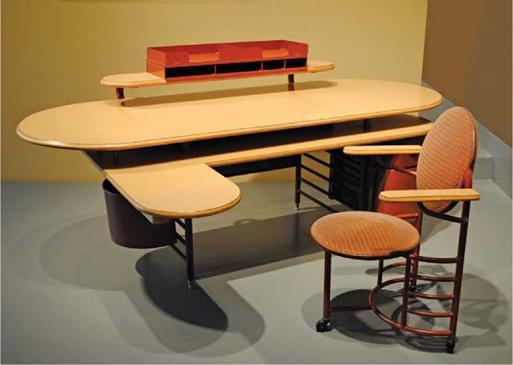 89 cm deep; 84.5 cm high). Photography by Gerald R. Larson, 2005.
89 cm deep; 84.5 cm high). Photography by Gerald R. Larson, 2005.
|
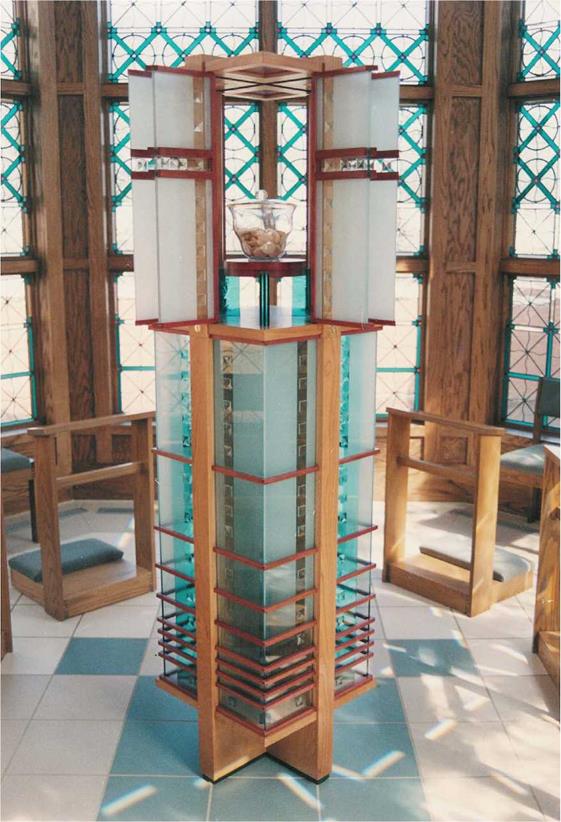
|
|
Figure color-8a Chaise Longue Pernilla chair, designed by Bruno Mathsson (1943). Made using curved beech, bands of webbing made from twisted Kraft paper. Photography by Jim Postell, 2011.
|
|
Figure color-8b Three-seat settee, designed and fabricated by Wendell Castle (1968). Stacked-laminated, carved cherry wood. Photography by Jim Postell, 2011.
|
|
|
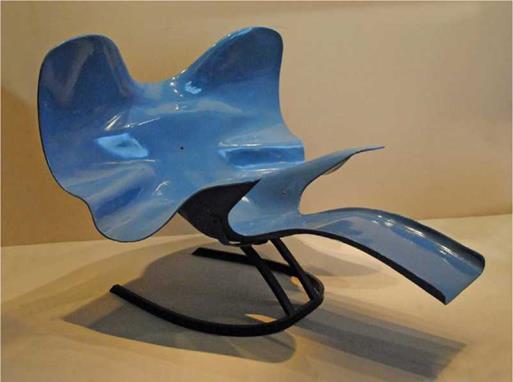

|
|
Figure color-10a Living Sculpture in nine components, designed by Verner Panton (1970-1971). Made using mass polyethylene, with an internal armature supported by expanded polystyrene foam, upholstered in wool. Overall size: 86 У2 inches x 200 % inches x 169 Ъ inches (220 cm x 510 cm x 430 cm). Fabricated by Mira-X. Photography by Jim Postell, 2011.
|
|
Figure color-10b "Tube" chair, designed by Joe Colombo (1969-1970). PVC plastic (polyvinyl chloride), steel, rubber, polyurethane foam and synthetic knit upholstery. Photography by Gerald R. Larson, 2010.
|
|
Figure color-11a Store and Stack modules, designed by Jim Postell (2008). Folded copper, cherry, bending birch, and neoprene 80. Photography by Jim Postell, 2008.
|
|
Figure color-11b Roto-molded MT3 rocking lounge seating, designed by Ron Arad (2006). Photography by Jim Postell, 2006.
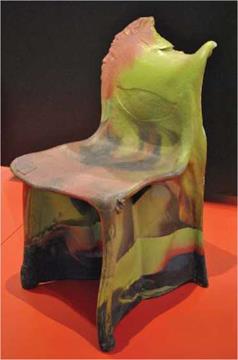

 Figure color-12b Chair and table made from postconsumer recycled plastic packaging that is draped and melted over a frame to produce a melange of distressed imagery, designed by Bar + Knell Design (1990). Photography by Jim Postell, 2006.
Figure color-12b Chair and table made from postconsumer recycled plastic packaging that is draped and melted over a frame to produce a melange of distressed imagery, designed by Bar + Knell Design (1990). Photography by Jim Postell, 2006.
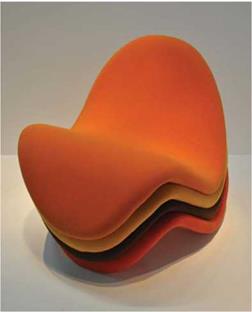 |
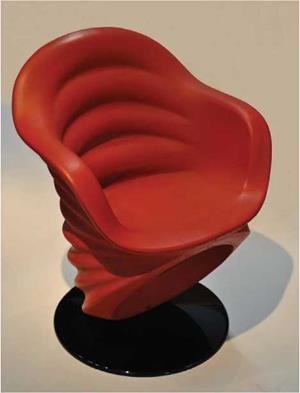
Figure color-12c Stacked Tongue 577 chairs, designed by Pierre Paulin (1967), tubular steel armature surrounded with rubber webbing and expanded foam, upholstered in polyester stretch fabric. Manufactured by Artifort. 33% inches wide; 35% inches deep; 24 inches high; 131/8 inches seat height (85 cm wide; 90 cm deep; 61 cm high; 34 cm seat height). Photography by Jim Postell, 2011.
Figure color-12d Teneride, designed by Mario Bellini (1970), manufactured by Cassina. Photography by Jim Postell, 2011.

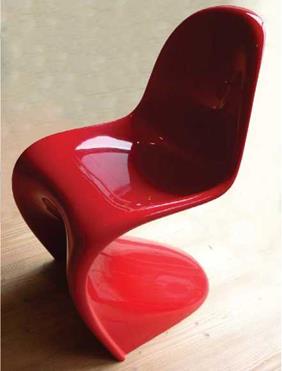
Figure color-13a You can’t lay down your memory chest of drawers. Designed and fabricated by Tejo Remy (1991). Metal, paper, plastic, burlap, contact paper, and paint. Photography by Jim Postell, 2011.
Figure color-13b Stackable Panton (or "S") chair, designed by Danish Verner Panton (1959-1960), manufactured by Nienkamper. Photography by Jim Postell, 2006.
|
|
Figure color-13c Stacking chairs BA 1171, designed by Helmut Batzner (1966), formed polyester. Photography by Jim Postell, 2011.
|
|
Figure color-13d Honeycombed paper (made from layers of glassine) used in the Honey-Pop armchair, designed by Tokujin Yoshioka’s (2000-2001). Photography by Jim Postell, 2011.
Figure color-14a ESTUDIO by Emiliano Godoy (2005), contoured stool featuring a used- customizable seat made from stainless steel screws. Featured at Materia Prima in Ludens. Photography courtesy of Emiliano Godoy, 2005.

 Figure color-14b Detail of contoured ESTUDIO by Emiliano Godoy (2005). Materials: Mahogany, stainless steel screws, removable inserts, carnauba wax. Size: 17% inches x 17% inches x 21% inches (45 x 45 x 55 cm). Photography courtesy of Emiliano Godoy, 2005.
Figure color-14b Detail of contoured ESTUDIO by Emiliano Godoy (2005). Materials: Mahogany, stainless steel screws, removable inserts, carnauba wax. Size: 17% inches x 17% inches x 21% inches (45 x 45 x 55 cm). Photography courtesy of Emiliano Godoy, 2005.
|

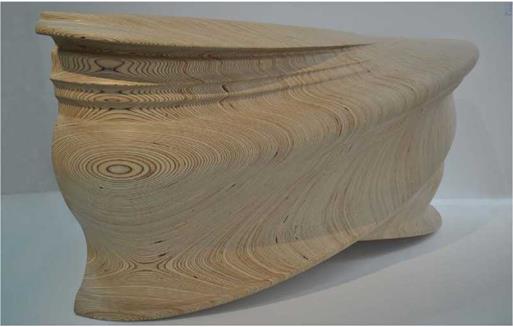 Figure color-16a Cinderella table, digitally designed and fabricated by Damakersvan, which is a collaboration of three designers: Judith de Graauw and brothers Jeroen and Joep Verhoeven (2005). Photography by Jim Postell, 2011.
Figure color-16a Cinderella table, digitally designed and fabricated by Damakersvan, which is a collaboration of three designers: Judith de Graauw and brothers Jeroen and Joep Verhoeven (2005). Photography by Jim Postell, 2011.
|
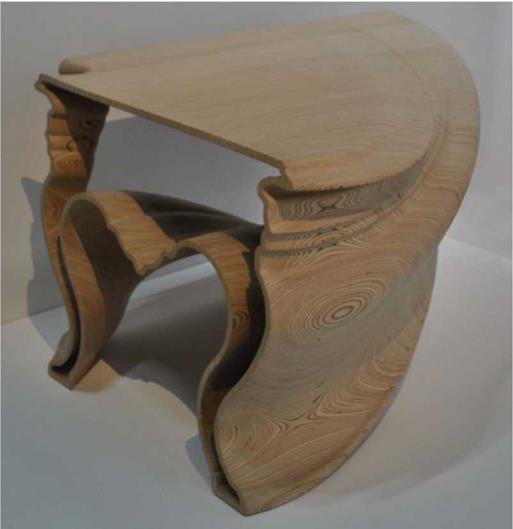
[1]All figures are taken at 50 percent category. As a rule, design parameters ought to include all adults between 2.5 percentile and 97.5 percentile.


